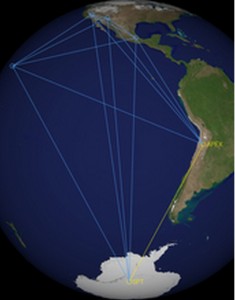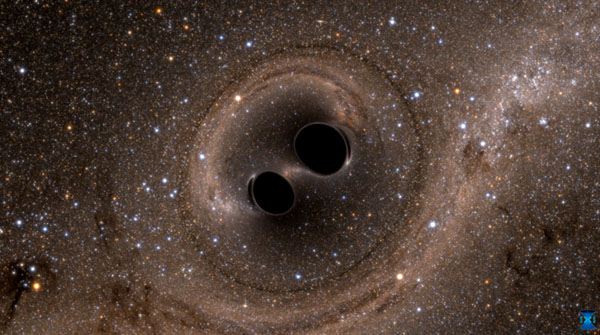
Credit: University of Arizona
To incorporate SPT into the EHT, Marrone’s team constructed a special, single-pixel camera that can sense the microwaves hitting the telescope. The Academia Sinica Institute for Astronomy and Astrophysics in Taiwan provided the atomic clock needed to precisely track the arrival time of the light. Comparing recordings made at telescopes all over the world allows the astronomers to synthesize the immense telescope. The Smithsonian Astrophysical Observatory and of the Massachusetts Institute of Technology Haystack Observatory provided equipment to record the microwaves at incredibly high speeds, generating nearly 200 terabytes per day.
“To extend the EHT to the South Pole required improving our data capture systems to record data much more quickly than ever before,” said Laura Vertatschitsch of the Smithsonian Astrophysical Observatory. A new “digital back end,” developed by Vertatschitsch and colleagues, can process data four times faster than its predecessor, which doubles the sensitivity of each telescope.
For their preliminary observations, Marrone’s team trained their instrument on two known black holes, Sagittarius A* in our galaxy, and another, located 10 million light years away in a galaxy named Centaurus A. For this experiment, the SPT and the APEX telescope in Chile observed together, despite being nearly 5,000 miles apart. These data constitute the highest resolution observations ever made of Centaurus A (though the information from a single pair of telescopes cannot easily be converted to a picture).
“VLBI is very technically challenging, and a whole system of components had to work perfectly at both SPT and APEX for us to detect our targets,” said Junhan Kim, a doctoral student at the University of Arizona who helped build and install the SPT EHT receiver. “Now that we know how to incorporate SPT, I cannot wait to see what we can learn from a telescope 10,000 miles across.”
The next step will be to include the SPT in the annual EHT experiments that combine telescopes all over the world. Several new telescopes are prepared have been preparing to join the EHT in the next year, meaning that the next experiment will be the largest both geographically and with regard to the number of telescopes involved. The expansion of the array is supported by NSF’s Division of Astronomical Sciences through its new Mid-Scale Innovations Program.
Doeleman noted that “The supermassive black hole at the Milky Way’s Center is always visible from the South Pole, so adding that station to the EHT is a major leap toward bringing an event horizon into focus.”
The University of Chicago manages the South Pole Telescope, with support from Polar Programs, and leads an international research collaboration that exploits the telescope’s unique capabilities. The NSF-funded Physics Frontier Center of the Kavli Institute for Cosmological Physics, the Kavli Foundation and the Gordon and Betty Moore Foundation provide partial support.
The APEX telescope, located in Chile’s Atacama Desert, is a collaboration between the European Southern Observatory, the Max Planck Institute for Radioastronomy and Onsala Space Observatory in Sweden.
Pages: 1 2






